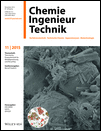Processing of Grinding Slurries Arising from NdFeB Magnet Production
Abstract
Neodymium-iron-boron (NdFeB) grinding slurries are the residual output of grinding as shaping process step in the production process of sintered NdFeB magnets. The treatment of the grinding slurries with the aim of recovering rare earth elements may lead to a reduced demand in primary raw materials like the rare earth elements neodymium, praseodymium and dysprosium. In this study, the possibility of recycling the contained rare earth elements, which account for up to 30 wt % in the alloy, through a pyrometallurgical process was investigated. The necessity of a thermal conditioning prior to the pyrometallurgical process is described.




